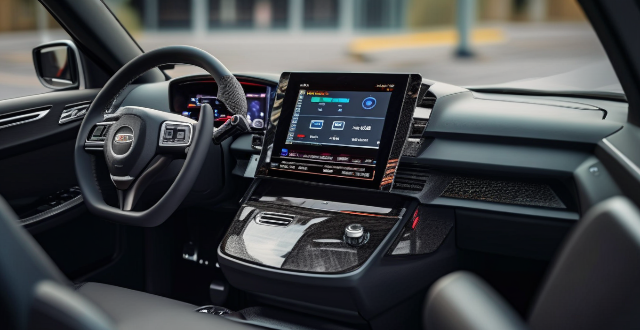Automotive electronic systems are crucial components of modern vehicles, improving performance, safety, and comfort. Key features include engine management with ECU and sensors for fuel injection control, ignition timing, and air-fuel ratio monitoring. Chassis control involves ABS, traction control, and ESC for wheel speed monitoring, torque reduction, and vehicle stability. Safety systems encompass airbags for various impacts and back-up cameras for rearview assistance. Entertainment and connectivity are provided by infotainment systems with touchscreen displays, smartphone integration, and Bluetooth connectivity for hands-free calling and media streaming. Convenience features include power windows with auto-reverse, keyless entry and start, and heated seats and steering wheels for comfort in cold weather. These systems enhance the driving experience and will continue to evolve with technological advancements.

Automotive Electronic Systems: Key Features
Automotive electronic systems have become an integral part of modern vehicles, enhancing performance, safety, and comfort. These systems are designed to monitor and control various aspects of a vehicle's operation, providing drivers with a more convenient and enjoyable driving experience. Here are some key features of automotive electronic systems:
Engine Management
ECU (Engine Control Unit)
- Fuel Injection Control: Regulates the amount of fuel injected into the engine based on sensor data.
- Ignition Timing: Determines the optimal timing for spark plug firing to maximize engine efficiency and power.
- Air-Fuel Ratio Monitoring: Ensures the correct mixture of air and fuel for optimal combustion.
Sensors
- Oxygen Sensor: Measures the oxygen content in exhaust gases to adjust the air-fuel ratio.
- Crankshaft Position Sensor: Provides information about the engine's speed and position for proper ignition timing.
- Mass Air Flow Sensor: Measures the amount of air entering the engine for accurate fuel injection.
Chassis Control
ABS (Anti-lock Braking System)
- Wheel Speed Sensors: Monitor the rotational speed of each wheel.
- Hydraulic Control Unit: Modulates brake pressure to prevent wheel lockup during hard braking.
Traction Control
- Wheel Slip Detection: Detects when one or more wheels are losing traction.
- Torque Reduction: Reduces engine power to the slipping wheel(s) to maintain stability.
Electronic Stability Control (ESC)
- Vehicle Dynamics Monitoring: Uses sensors to detect loss of vehicle control.
- Automatic Correction: Applies individual brake forces and reduces engine power to stabilize the vehicle.
Safety Systems
Airbags
- Frontal Impact: Deploys in the event of a head-on collision.
- Side Impact: Protects occupants from side collisions.
- Rollover Sensor: Detects when a vehicle rolls over, triggering side curtain airbags.
Back-up Cameras
- Rear View: Displays what's behind the vehicle when in reverse gear.
- Guidelines: Overlays to assist with parking and avoiding obstacles.
Entertainment and Connectivity
Infotainment System
- Touchscreen Display: Central hub for controlling music, navigation, and vehicle settings.
- Smartphone Integration: Apple CarPlay and Android Auto compatibility for seamless device connectivity.
- Satellite Radio & Streaming Services: Access to a variety of music and media options.
Bluetooth Connectivity
- Hands-free Calling: Allows drivers to make and receive calls without manual phone interaction.
- Media Streaming: Wireless audio playback from smartphones or other devices.
Convenience Features
Power Windows
- One-touch Opening/Closing: Allows windows to be opened or closed with a single press.
- Auto-reverse: Prevents pinching by reversing the window if an obstruction is detected.
Keyless Entry and Start
- Remote Fob: Unlocks doors and starts the engine without physically inserting a key.
- Pushbutton Start: Starts the vehicle with the push of a button once the fob is inside.
Heated Seats and Steering Wheel
- Warmth on Demand: Provides warmth in cold weather for driver and passenger comfort.
- Multi-level Heat Settings: Allows adjustment of heat intensity according to preference.
In conclusion, automotive electronic systems encompass a wide range of features that not only enhance performance but also prioritize safety, convenience, and comfort for drivers and passengers alike. As technology continues to advance, these systems will undoubtedly become even more sophisticated and integrated into our daily driving experiences.